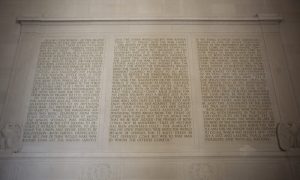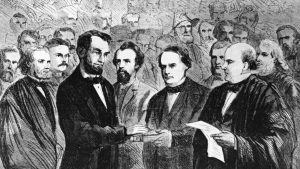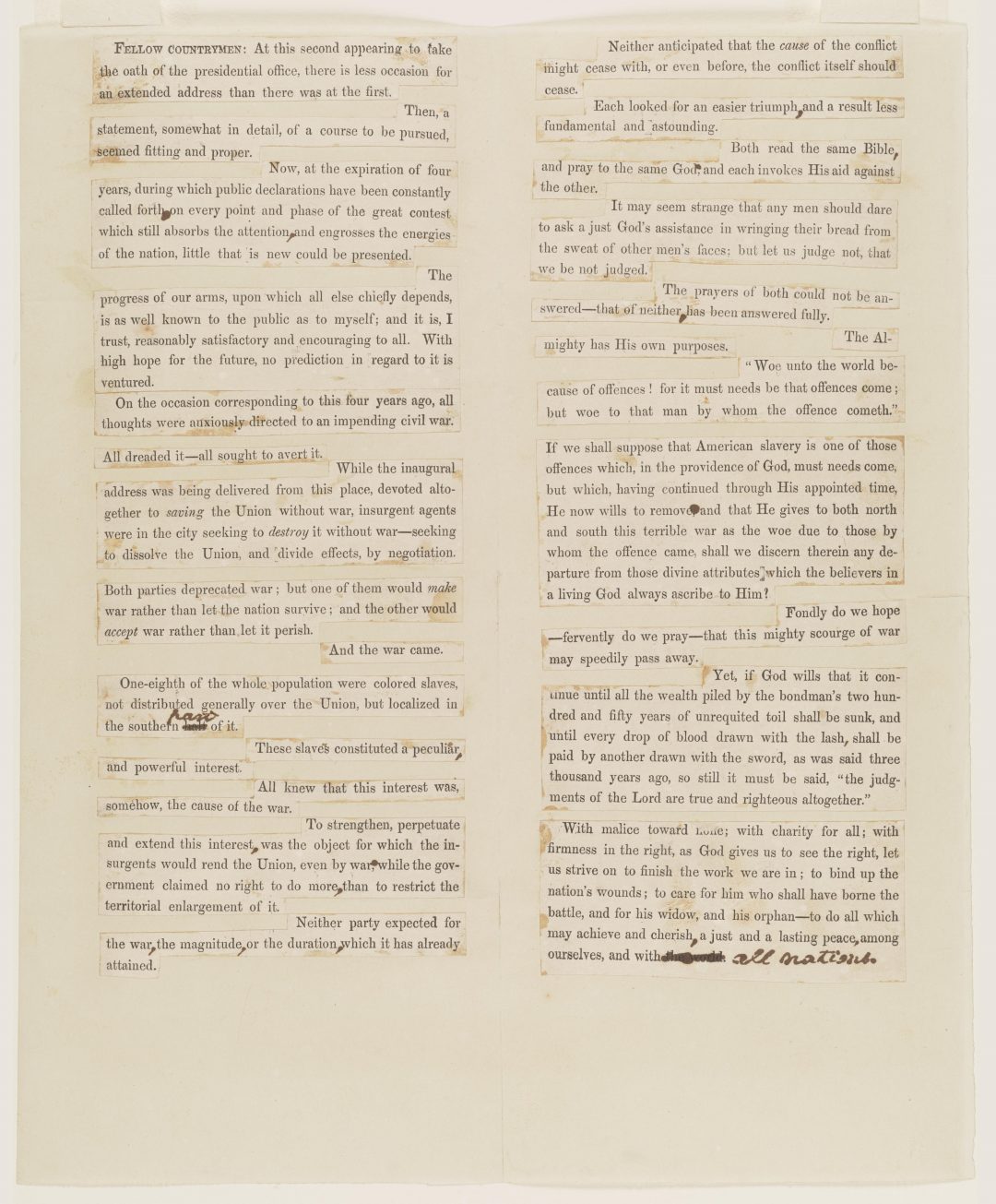Abraham Lincoln’s Second Inaugural Address: A Call for Healing and Unity
President Abraham Lincoln gave his Second Inaugural Address on the Capitol steps on March 4, 1865, as the Civil War ended. This speech, often considered among his best rhetorical works, is notable for its modest tone and deep moral significance. Lincoln focused on reconciliation, forgiveness, and healing rather than joyfully celebrating the Union’s imminent victory. His speech laid the groundwork for peace following the war by articulating a vision of a country united by shared sacrifice and a renewed dedication to justice and democracy.¹
Lincoln’s Address in Historical Context
The address, which was given at a critical turning point in American history, captured the deep pain and division brought forth by over four years of bloody fighting. Both the North and the South had suffered dramatically as a result of the Civil War, which was based on disagreements about slavery, states’ rights, and the maintenance of the Union. A key component of Lincoln’s presidency by his second inauguration, the abolition of slavery reflected his broader vision for the United States.².
That day, Lincoln’s audience comprised Southerners who saw him as a divisive figure and Northern sympathizers. Lincoln overcame the contentious conflicts of the day by presenting his speech re
garding moral reckoning and social duty. His appeal for national reconciliation demonstrated his dedication to leading the country toward a more democratic and united future by appealing to common values and a higher moral purpose.³

The Rhetorical Power and Message of the Speech
Lincoln’s quiet and reflective tone makes his address noteworthy. He urged the country to embrace empathy and reconciliation rather than triumphalism. The following is one of the most memorable passages:
“With malice toward none, with charity for all, with firmness in the right as God gives us to see the right, let us strive on to finish the work we are in, to bind up the nation’s wounds.”⁴
The language used emphasized the need for forgiveness and compassion more than bitterness or vengeance. Lincoln urged his audience to see the conflict as a way for everyone to repent of the sin of slavery by bringing up shared moral responsibility.⁵
Lincoln’s use of religious imagery and moral argumentation is best illustrated by the phrase “scourge of war.” He implied neither side was correct or incorrect and presented the dispute as a divine judgment. This framing created an atmosphere of humility and reflection, encouraging Americans to share responsibility for the origins and effects of the conflict.⁶ Lincoln’s function as a national moral compass and as a wartime leader was emphasized by such discourse.
Lincoln’s Prospects for Democracy
Lincoln’s evolving vision for a more inclusive democracy was also alluded to in his speech. Lincoln had come to openly support African American political rights, especially the ability to vote, by the war’s end. The speech’s focus on justice and unity set the stage for reforms during Reconstruction, even if it did not specifically address African American voters. According to the JSTOR article “Extending the Hand of Democracy: Lincoln and African American Voters.” his acceptance of African American troops and voters in the latter years of his presidency was a turning point in American culture.
Lincoln encouraged attempts to increase the political voice of all Americans, including those previously enslaved, by presenting democracy as a common endeavor based on moral responsibility and respect for one another. Even though it was controversial, this idea of an inclusive democracy would influence the country’s course for many years.⁸
Lincoln’s Second Inaugural Address’s Long-Term Effects
Lincoln’s Second Inaugural Address is still a classic of American political discourse because of its relevance, humility, and eloquence. Lincoln offered a framework for national reconciliation that would continue to be relevant long after his assassination by highlighting moral healing and shared accountability. His words serve as a timeless reminder of the values of justice, forgiveness, and unity, and they continue to motivate people who aspire to a more compassionate and cohesive society.⁹
This speech is a source of hope and a testament to the strength of moral leadership during times of crisis because of its simple yet impactful call to action. It forces us to think about how we may work toward harmony and a shared dedication to justice despite our extreme differences.
- Striner, Richard. “Abraham Lincoln and the Ideal of Equality.” The Journal of the Abraham Lincoln Association, vol. 27, no. 2, 2006, pp. 1–25. JSTOR, https://www.jstor.org/stable/40191718.
- Fredrickson, George M. “A Man but Not a Brother: Abraham Lincoln and Racial Equality.” The Journal of Southern History, vol. 41, no. 1, 1975, pp. 39–58. JSTOR, https://www.jstor.org/stable/2206706.
- Lincoln, Abraham. “Second Inaugural Address.” Delivered 4 Mar. 1865. The Collected Works of Abraham Lincoln, edited by Roy P. Basler, vol. 8, Rutgers University Press, 1953, pp. 332–333. Library of Congress, https://www.loc.gov/item/lincoln.4500010/.
